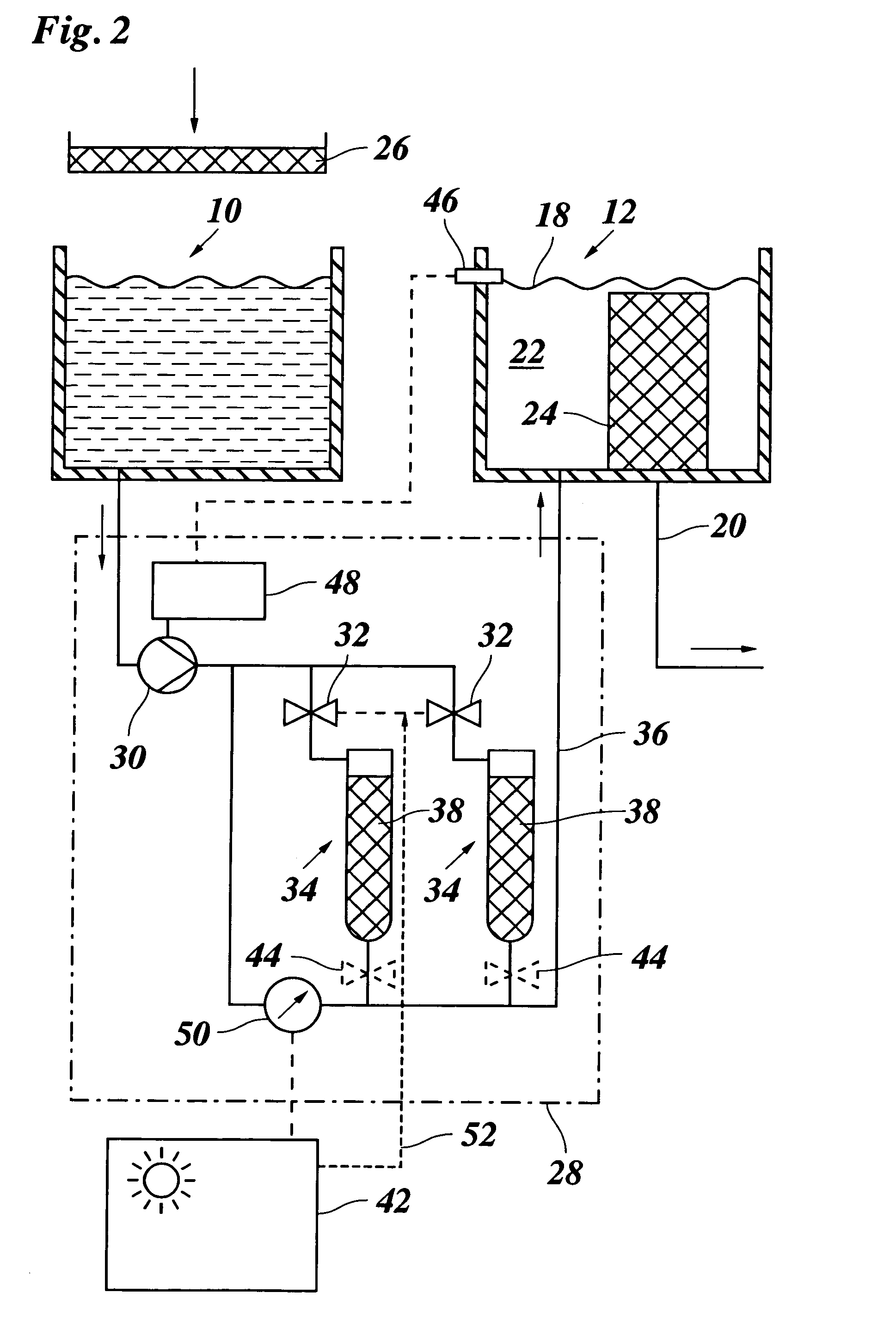Brine container with filter system
a filter system and container technology, applied in the field of brine containers, can solve the problems of gradual contamination of the brine filter
- Summary
- Abstract
- Description
- Claims
- Application Information
AI Technical Summary
Benefits of technology
Problems solved by technology
Method used
Image
Examples
Embodiment Construction
[0018]FIG. 1 shows a brine container with a recycling region 10 and a suction region 12, which are separated from one another by a separating filter 14, which is inserted in the brine container. The separation filter 14, in its upper region, has a wall 16, with which it protrudes above the liquid surface 18. The brine container is, for example, part of a pickling machine, which is supplied with pickling brine 22, which is aspirated through a suction filter 24, by means of a pump over a suction pipeline 20. The suction filter 24 produces, for example, a finer filtration than does the separation filter 14.
[0019]Brine, discharging from the pickling machine, is recycled over a coarse filter 26 to the recycling region 10. After the coarse filtration, the brine in the recycling region 10 still has a certain degree of contamination. The recycling region 10 and the suction region 12 are connected by a circulating filter system 28, which is shown symbolically and explained in greater detail ...
PUM
| Property | Measurement | Unit |
|---|---|---|
| permeable | aaaaa | aaaaa |
| pressure | aaaaa | aaaaa |
| time | aaaaa | aaaaa |
Abstract
Description
Claims
Application Information
 Login to View More
Login to View More - R&D
- Intellectual Property
- Life Sciences
- Materials
- Tech Scout
- Unparalleled Data Quality
- Higher Quality Content
- 60% Fewer Hallucinations
Browse by: Latest US Patents, China's latest patents, Technical Efficacy Thesaurus, Application Domain, Technology Topic, Popular Technical Reports.
© 2025 PatSnap. All rights reserved.Legal|Privacy policy|Modern Slavery Act Transparency Statement|Sitemap|About US| Contact US: help@patsnap.com



